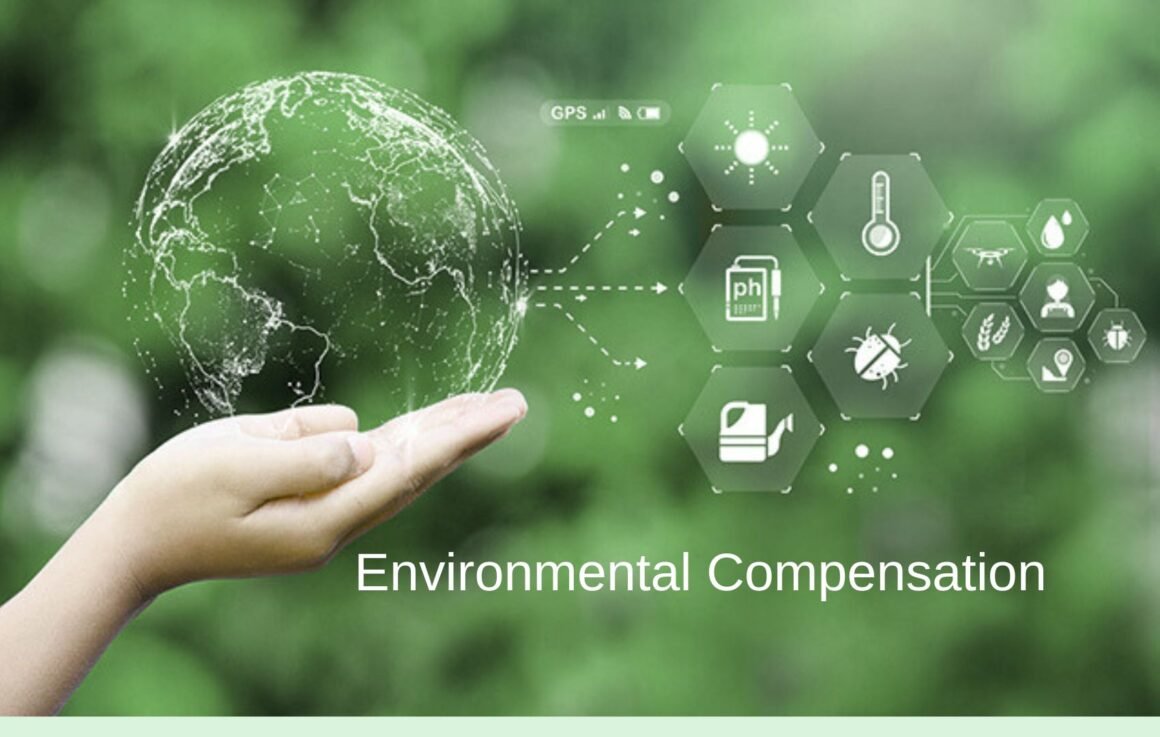
“Environmental Compensation EC in India: When You Pollute, You Pay the Price for Ignoring Nature’s Balance.”
India’s rapid economic growth has come with a heavy environmental price. Air pollution, water contamination, illegal dumping, and improper waste management have reached alarming levels.
In an attempt to address these growing challenges, regulatory authorities such as the Central Pollution Control Board (CPCB) and State Pollution Control Boards (SPCBs) have implemented an enforcement tool known as Environmental Compensation EC in India. It serves as both a deterrent and a remedy, ensuring that those who pollute or fail to comply with environmental norms pay the cost of restoring the environment.
Environmental Compensation is based on the Polluter Pays Principle (PPP)—a concept that places financial responsibility for environmental damage squarely on the shoulders of the polluter. This principle aims to ensure that environmental costs are internalised by the entity causing harm, rather than being absorbed by the public. It aligns India’s environmental enforcement with global sustainability standards and ensures that economic growth does not come at the expense of ecological stability.
The legal foundation for Environmental Compensation EC in India lies in several key legislations and judicial precedents. The Environment (Protection) Act, 1986, empowers the government to take punitive and restorative action against violators. The National Green Tribunal (NGT) Act, 2010, further reinforces this by granting the NGT authority to impose EC on individuals, corporations, and even state bodies responsible for environmental harm.
The CPCB’s Guidelines for Environmental Compensation (2020) provide detailed methodologies for calculating penalties, taking into account the pollution load, duration of non-compliance, and extent of damage. Moreover, rules like the E-Waste Management Rules (2022), Plastic Waste Management Rules (2016, amended 2022), and Battery Waste Management Rules (2022) explicitly integrate EC provisions for non-compliance with Extended Producer Responsibility (EPR) targets.
Environmental Compensation EC in India applies across multiple sectors. Industrial units that release untreated effluents into rivers, construction firms operating without clearance, and municipal bodies failing to manage solid waste are all liable for EC. For instance, in 2024, the Kurali Municipal Council in Punjab was fined ₹68 lakh by the NGT for illegal dumping under the Solid Waste Management Rules. Similarly, civic bodies in Haryana were ordered to pay ₹15 crore for persistent violations of waste norms. Even large corporations, particularly those in the plastic and electronics industries, have been penalised for failing to achieve EPR collection and recycling targets under CPCB monitoring.
The methodology for calculating EC follows a scientific and transparent framework. CPCB’s formula factors in the pollution load, time span of the violation, cost of restoration, and a penalty multiplier depending on the severity of the breach. The longer the non-compliance continues, the higher the liability. For example, if an industrial facility emits pollutants above permissible limits for several months, the EC will reflect not just the volume of pollution but also the environmental and health impact it has caused. This approach ensures proportional justice and deters repeat offenders.
The funds collected through Environmental Compensation EC in India are directed towards environmental restoration, research, and infrastructure development. These funds are kept in special Environmental Restoration Accounts managed by CPCB and state boards to ensure transparency. They are used for rehabilitating polluted sites, setting up monitoring systems, and supporting awareness campaigns. In this sense, EC not only penalises but also contributes directly to rebuilding damaged ecosystems.
Failure to comply with the Environmental Compensation EC in India orders carries serious consequences. Non-payment can result in suspension of operations, revocation of environmental clearances, and even prosecution under the Environment Protection Act. The CPCB and SPCBs have the authority to shut down industries, freeze bank accounts, and impose additional penalties with interest for delayed payments.
Beyond legal repercussions, non-compliance can severely damage a company’s public image and investor confidence. In an era where Environmental, Social, and Governance (ESG) performance shapes corporate reputation, paying EC is no longer just a financial matter—it’s a question of corporate ethics and sustainability.
Technology is now central to EC enforcement. CPCB’s real-time emission and effluent monitoring systems allow regulators to detect violations instantly. Artificial intelligence and satellite imagery help identify illegal waste dumping and unauthorized mining. Blockchain technology is being explored for tracking EPR credits, ensuring traceability in recycling and waste recovery. These technological interventions mark a shift toward a more data-driven and transparent system of environmental governance in India.
Globally, the concept of Environmental Compensation EC in India is not new. The United States enforces the Superfund Law, which holds polluters financially responsible for cleaning up hazardous waste sites. The European Union’s Environmental Liability Directive (ELD) similarly mandates restoration of damaged ecosystems. China’s Green Development Policy also integrates compensation mechanisms into its industrial regulatory system. India’s approach stands out for merging EC with EPR frameworks and leveraging technology to ensure effective implementation.
The future of Environmental Compensation in India lies in strengthening accountability and linking it more closely with carbon credits, ESG benchmarks, and sustainable finance. As the country works toward its Net Zero 2070 target, EC will serve as a vital mechanism for balancing industrial progress with ecological preservation. It has the potential to become a powerful driver of corporate responsibility, influencing industries to adopt cleaner technologies, sustainable waste management practices, and transparent reporting mechanisms.
Environmental Compensation EC in India is not merely a punishment—it is a commitment to environmental justice. It ensures that those who profit from natural resources also bear the cost of their misuse. By embedding accountability into India’s environmental governance framework, EC is paving the way for a future where development and sustainability coexist harmoniously. In a nation striving for both growth and green progress, Environmental Compensation stands as a reminder that true prosperity is measured not by industrial output but by the health of the planet we call home.
FOR MORE BLOGS – beyondthepunchlines.com

 Add to favorites
Add to favorites








